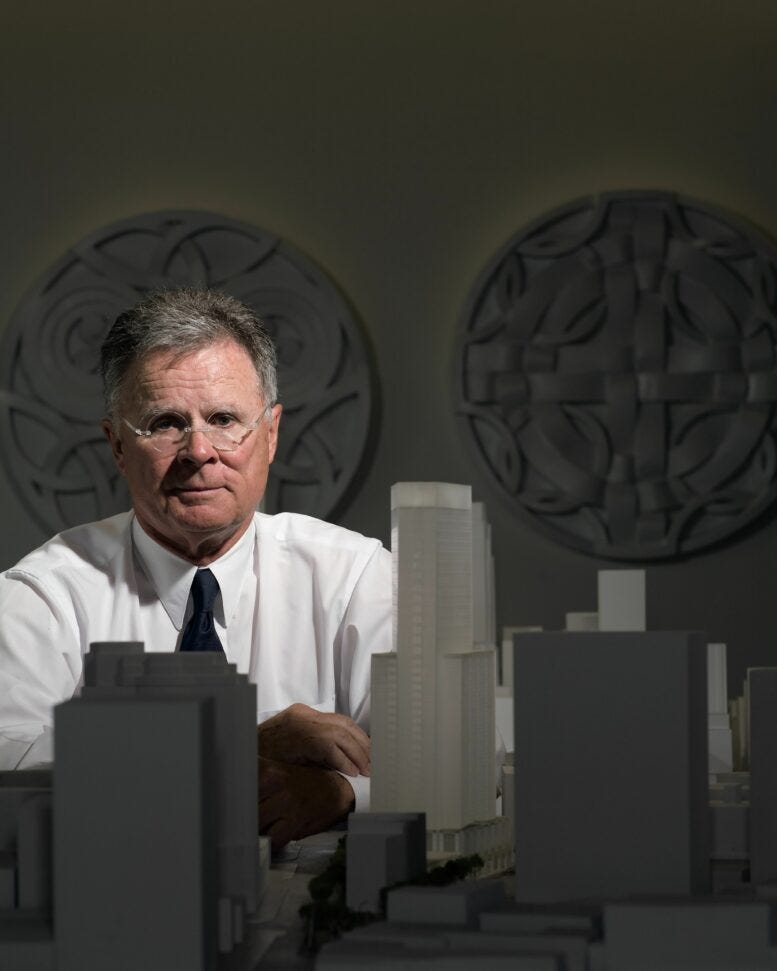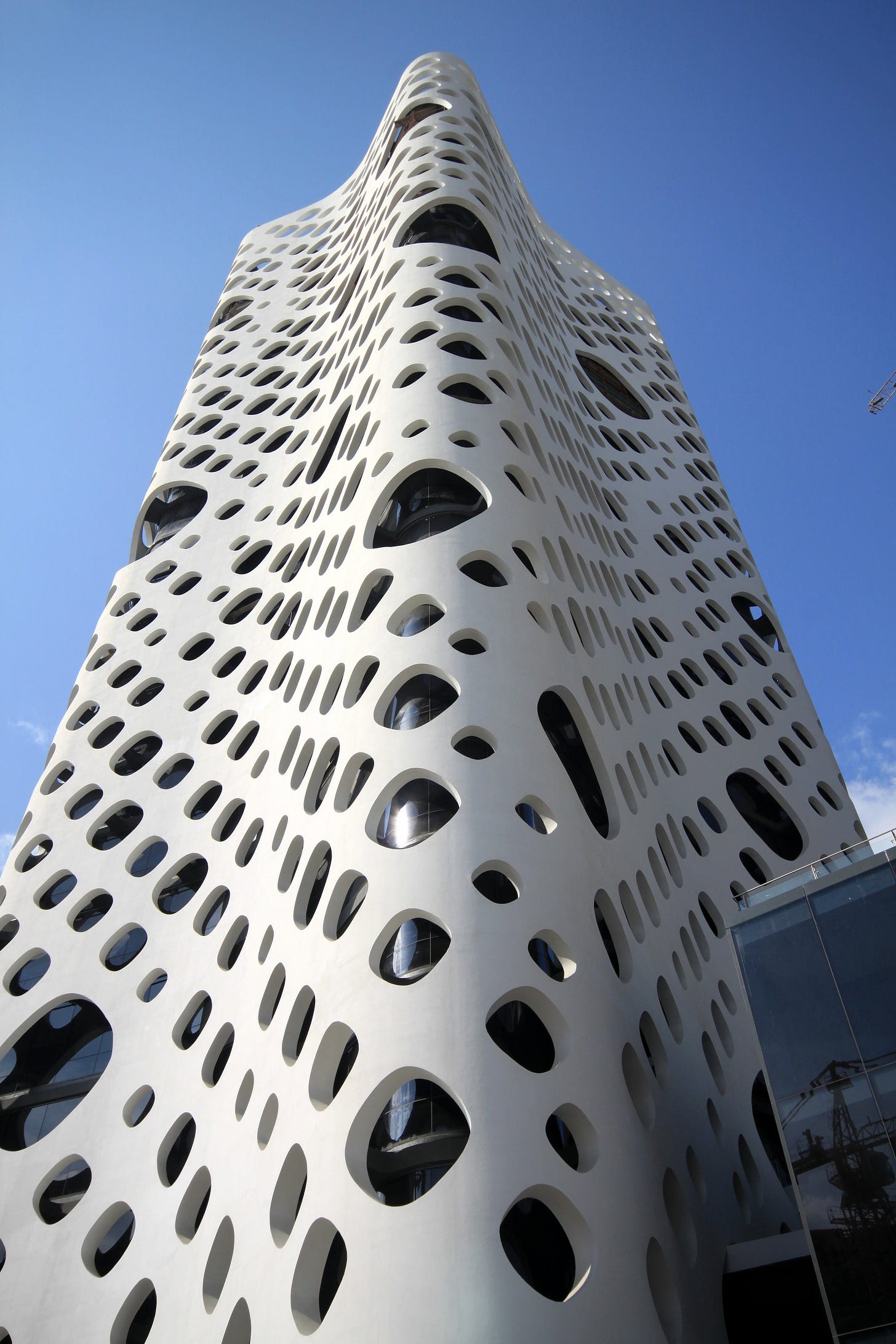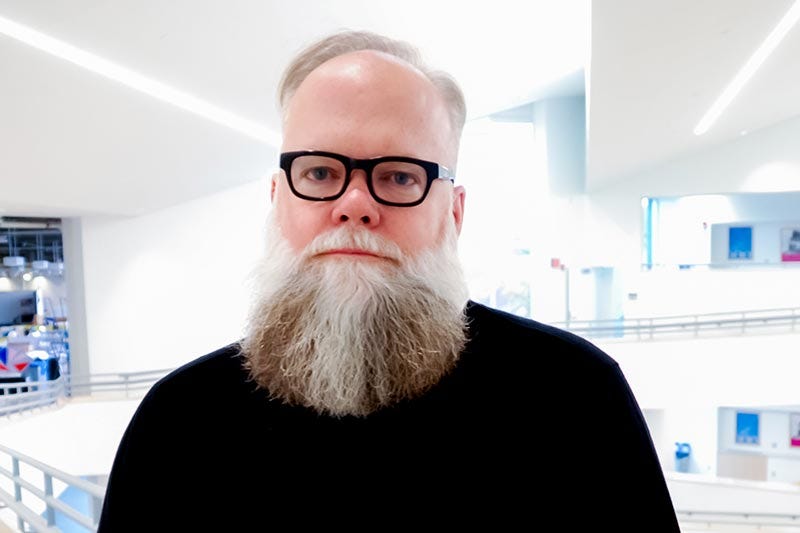A 2010 interview with KSA Director Ann Pendleton-Jullian
What is APJ's go-to drink? Her first architecture job? Thoughts on school rankings? Read below for the complete Q&A by Andrea Kamilaris from Issue 1, Fall 2010.
1:12: What is your favorite Columbus Eatery?
APJ: That’s a tough question because there’s a lot of variety in Columbus. I like Lindey’s, Rigsby’s.
1:12: How often do you take the ramp at Knowlton, favourite method of transportation?
APJ: All of them. It depends on who I’m going to see, how fast I need to get there, who I want to find along the way, whether I want to walk through the studios or get there quickly. I grew up in an old house in Cleveland where there were servants’ quarters separated from the rest of the house where you could always find a different way for getting somewhere.
1:12: Drink of Choice?
APJ: Espresso or Frappuccino from Starbuck’s with an extra shot.
1:12: Biggest non-architectural influence?
APJ: My generation is influenced by many things outside of architecture. We poach from a lot of areas. I wouldn’t say I’m unique in that way. It would be misrepresentative to say one. I did study astrophysics before I studied architecture. Prior to that, I was involved in fashion design in New York. When I grew up I was always knitting. There is a kind of craft. Knitting was very computational for me because there are two stitches. From knitting, to actual construction of garments, to astrophysics, to architecture. I am a tremendous reader of everything, literature, theory, things way outside of my field. Movies have been pervasive throughout my life.
1:12: Last musical album purchased?
APJ: We don’t buy albums anymore! Who wrote these questions? I don’t think I ever bought albums. I matured during the short period of two years when 8-track tapes were going to be the wave of the future. I am always downloading. I have to say I’m very eclectic: a big fan of jazz and rap. Tremendous fan of rap. I do not like sappy songs. I like songs of empowerment, especially for girls. I do not like girl victim or apocalyptic songs. It’s easier to say what I don’t like than what I do like. There’s a lot. I do like Latin or Spanish songs. Actually opera, to me, opera is like film. You go to opera like film, because it’s not the film that you go to for the entertaining experience, it is the learning a spatial experience.
1:12: List of current hobbies outside of architecture?
APJ: I haven’t been practicing in three years. But for me the practice is always what I did with my time that is not school time. I intend to return to practicing. To me everything is a design problem with everything we are facing now. I came here thinking we need to design our own futures in a collaborative way. I haven’t been unhappy not practicing. One of the papers I was writing is a design of a new model for education. I started it as a design, as a model for design schools for us, but it has gotten a lot of traction through much of higher education. I do write, I’ve been doing a lot with writing. I have written three books since I’ve been here. I do have a motorcycle. I don’t do it enough, I do it recreationally. You have to do it with people. I haven’t done it since I have been in Columbus.
1:12: First architecture job?
APJ: My first job was a great job. It was with Larry Booth-Hansen in Chicago. It was the first paying job. I was coming from school, so they gave me my own project in an office of 12. He was one of the Chicago seven at the time. He was a phenomenal mentor. He struck a very good balance between practice and design. All my training was “how do you make buildings?”, “what is the craft of a building?”
1:12: If you could collaborate with any architect, alive or dead, why?
APJ: Well, I had the great honor of working with my late husband who worked with Le Corbusier, so that was a hard experience to match. I also had the great honor of being very close with John Hejdul. So, I’m very lucky. Probably the architect I have been most impressed by recently is Jesse Reiser. His building that he did in Dubai is breaking new ground. And I think “collaborate,” because I could learn something with him. Actually, you shouldn’t put Jesse Reiser, you should put Reiser-Umemoto. When I talked to Jesse last time, I told him I haven’t seen anything this exciting in ten years and he was quick to mention her as his partner. He is using the digital, but he is more restrained and disciplined. He is using the digital with a rigor of thought.
1:12: If you could hire any current architect to teach at Knowlton, who and why?
APJ: That’s actually a very difficult question. One would never get enough. Let me rephrase it. I am not avoiding the question, but I sincerely believe that we’ve entered a world where the world with this concept that things are more horizontal, things across the board allows deeper talent to be developed. For instance, what Jesse Reiser is doing is very different from what WorkAC is doing, and they’re both very valuable. The key today would not be to hire one architect, but the mechanism to create a network of 6 people, that one could tap into in some way. I firmly believe in hiring a network, rather than hiring one star. That doesn’t mean a network isn’t comprised of stars. It’s the way you put together an organism. I would want to hire an organism, if that makes sense. But I would have to build it. It’s the conversation between the people that is way more interesting today than having one person come in and say “here is what I do.” I would rather have six people come in and say here is a piece of what I do.
1:12: As director of the school what do you expect to accomplish with the school and your students?
APJ: I think everyone in academia recognizes that the world is more complex and global, that the problems we can be involved with are wide ranging. I think the school has a unique capacity already in how you think about architecture in the global world. It is a really unique quality. Our international work has come wide range. I’m working with several here to take on the Midwest as a project. And you can put those two together and it asks how we can be regionally based and globally focused. The Midwest is unique. It’s a theoretical project and pragmatic project. How can we have impact on the development. The critical and theory components are really strong and should absolutely continue.
I do believe also that we had an edge in advanced technology in the past and I believe that needs to absolutely come back. I believe that ecological value and the whole environment should cross cut. I believe that the horizontal cross cutting thing should pervade all discussion; it is the issue of environment and the issue of cultural understanding throughout. That is the horizontal connective tissue to this whole thing.
1:12: With John leaving, did that hurt the school in any way?
APJ: Of course. We lost a valuable faculty member who gave a lot to the school. At the same time, my role as director is to give my entire faculty the best opportunity to advance in every possible way, and if by doing that they become desirable to other people, then I have done my job. And if I do that job, then when I go to hire new faculty they will come here, like Karen Lewis, Jason Kentner, Sarah Cowles, Katherine Bennett, and Charisma Acey, knowing that I will do the same. I will support the leadership of the school to do the same for them. I can tell you not everyone does this. Columbus is not the East coast; it’s not come here and stay here because it’s Boston and everyone wants to be in Boston. So, our unique edge can be the way that we bring in the best and the brightest when they’re young and promote them to be the most extraordinary they can be. Of course they are going to go elsewhere. Then if they come back in five years because we can help them grow again, then that’s great. I was invited to the Aspen Institute to do a roundtable discussion with the top CEOs around the country and there was a discussion of talent, and this was my point exactly. Google, Amazon all of the great companies that are advancing in the 21st century believe it is more important to develop our talent than we become territorial. This goes back to the question of who I would like to hire. It’s not the notion of the network we need to create rather than hire the star. There is also the issue with tenure. If I hire one star and they are tenured for 20 years, is my school defined for 20 years. Today the world is moving so quickly that I need to keep talent coming in and bringing new ideas, while I honor the devoted, intellectually dynamic core faculty. Today, 20 years is too long.
1:12: One person can offer something, but for how long is it relevant?
APJ: A great star will always be relevant. I can always listen to Jeff Kipnis. A star will always be interesting. I’m not saying it is either or. I’m saying we have great people that are always interesting, like Jeff, that open up the world to new ways of thinking. But you need diversity that also brings new ideas continually.
1:12: Do you work towards or consider rankings? Do you compare to certain schools?
APJ: Rankings are important. Two things are important: one is what you are and one is also who you are perceived. I don’t prescribe to the, “you’re ugly on the outside but beautiful on the outside” sort of thing. Perceptions are perceptions. It is most important to have the strength of content first so you’re not making false advertisements. So when you do create the marketing and advertising you are marketing yourself in the way that you want to be known. And that is how you get the right students. When I was at MIT, the admissions committee, we recognized MIT and Harvard are different institutions. There were plenty of students that would do better at Harvard. MIT is an entrepreneurial environment. Even though there were very talented designers, they were not entrepreneurial and would be better at Harvard. At the end of the year, we would go through 5 accreditations and the Provost review. I mean talk about self-analysis. I feel a little bit like Woody Allen of the architecture school. It is all really valuable though because it has helped all of us.
1:12: Students feel that the administrative wing is sectioned off from KSA’s culture; that there is not a healthy enough dialogue with students. You’re starting to do your own brown bag lunches in your office. Is this one of the many ideas to bring us together in the near future?
APJ: Well first of all I think the brown bags should continue. I was asked about the brown bags, “why now?” It wasn’t so much “why now,” it was a “why not before?” kind of thing. I’ve always felt because of our studio environment there is a good strong relationship with out faculty. I think we can draw on the students as part of the committee, less as a consumer of what we do, but as a builder of knowledge of what we do. I think our studio, its recognized throughout the other disciplines, what we do in studio is unique. It is something that is innovative and creative. How do we absolutely leverage that? The faculty is devoted. It is the nature of criticism that one doesn’t always feel is about conflict. One thing that also makes our studio environment unique is we are raised to learn how to fail but in the company of others. With all the business rhetoric, failing is promoted because people believe they need to learn how to fail. Rewarding failure is not a good idea, rewarding risk taking that leads to learning is a good idea. What is beautiful about the studio is that we become practiced in moving forward from failure.
1:12: Thoughts on the publication?
APJ: I think there is a win here. As you move forward, whenever you take a position as being a voice for the student body, it means in a sense you are taking on responsibility for generosity. Nothing should become a platform; however, the individuals shouldn’t be up for criticism. How will all of you take on the responsibility of what you can actually print, and how you can help create a kind of weave between the different disciplines. It is a goal that should be part of what you are doing.
Past Issues
This article is a part of One:Twelve’s “From the Archives” series, selecting some of our favorite pieces since the magazine’s start in 2010.











